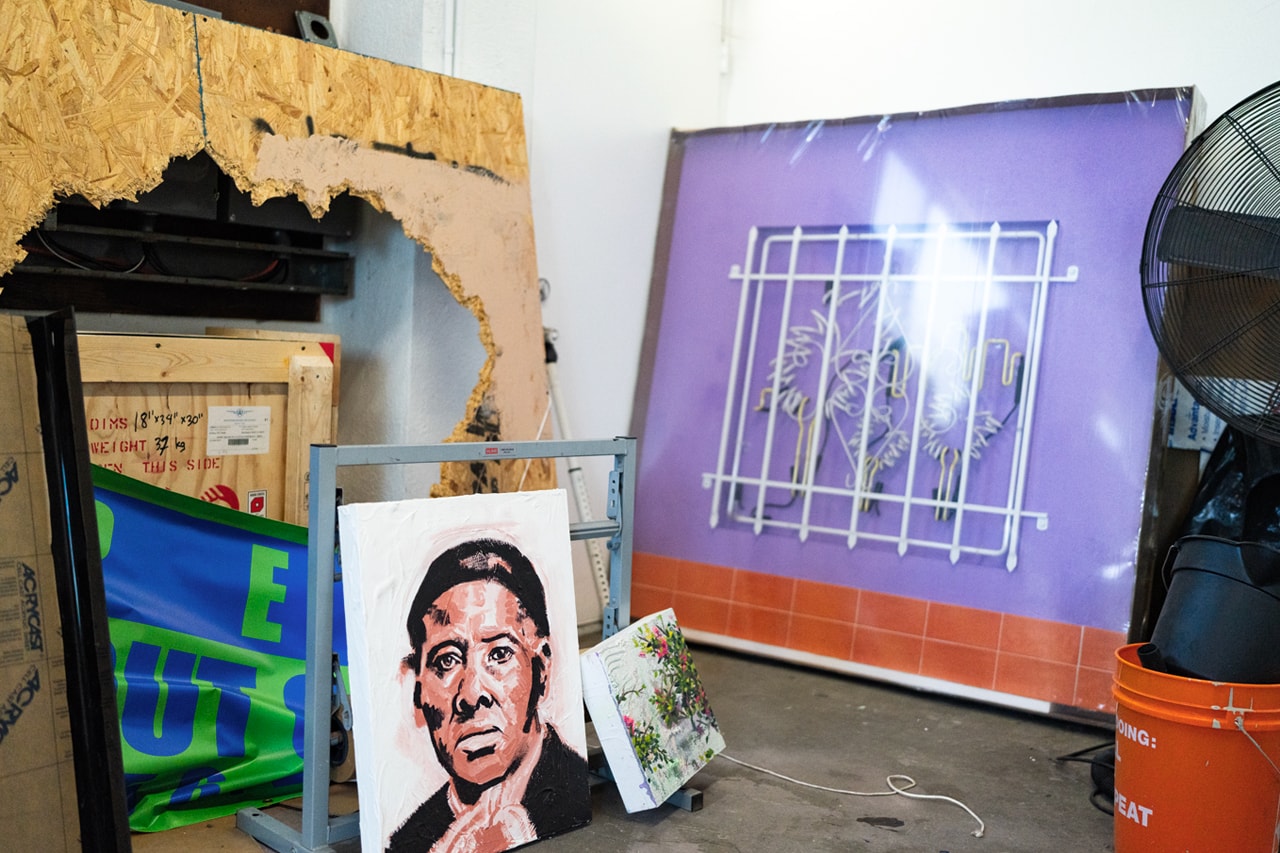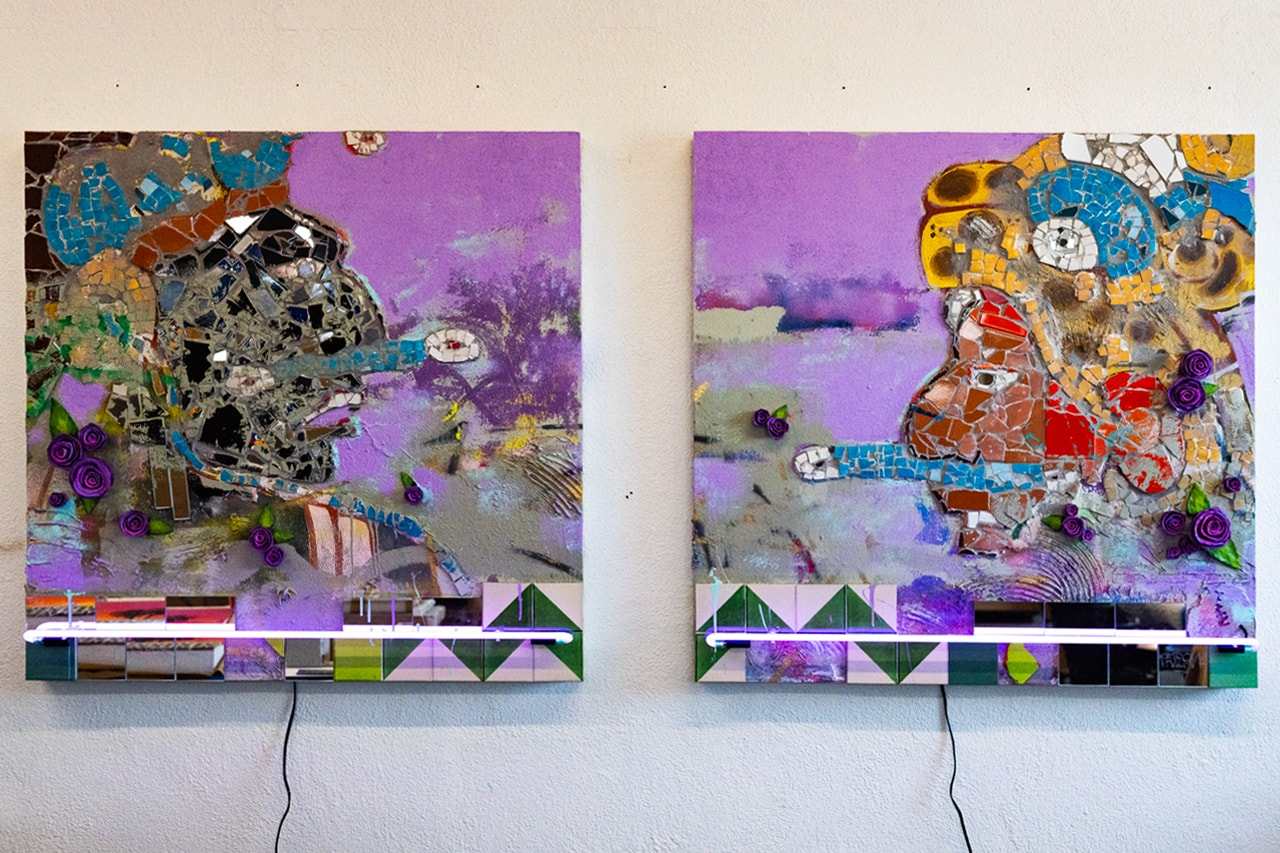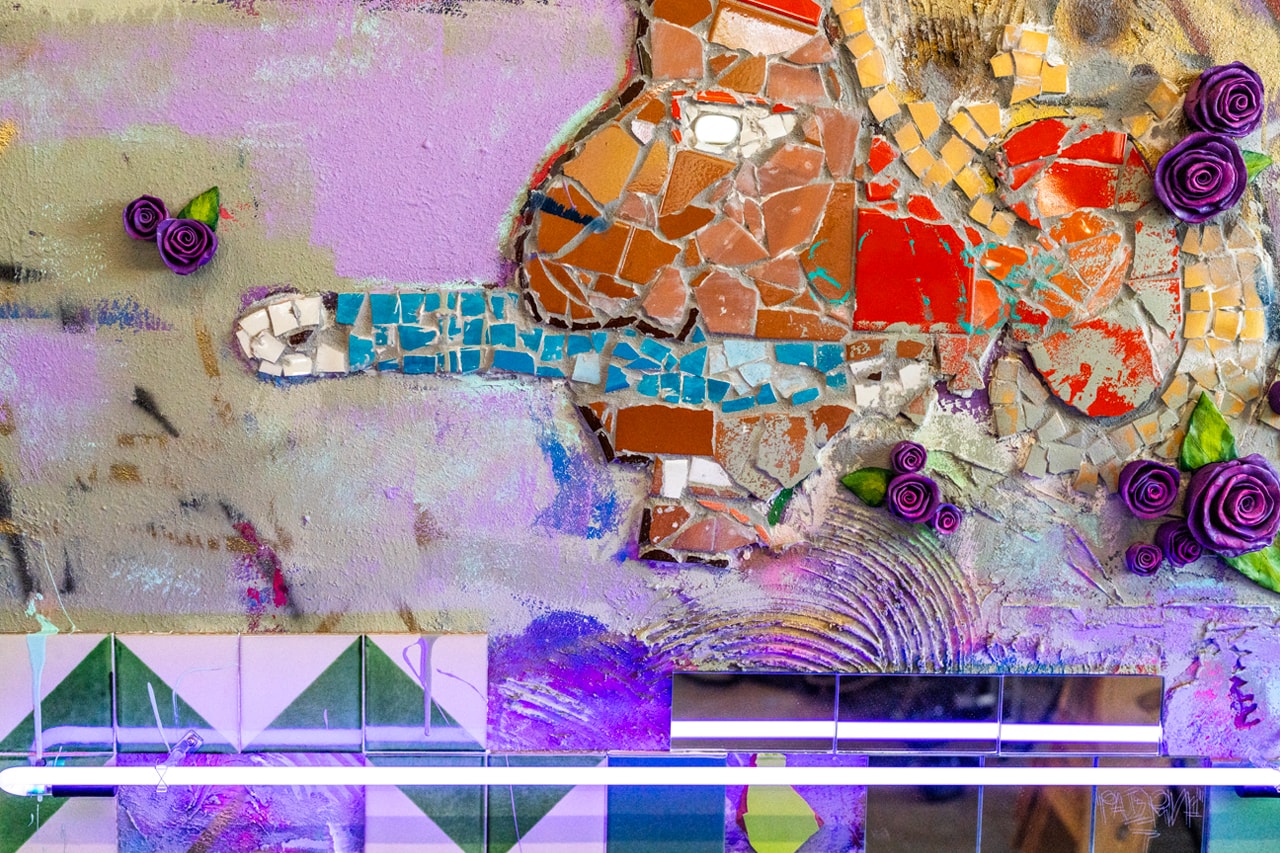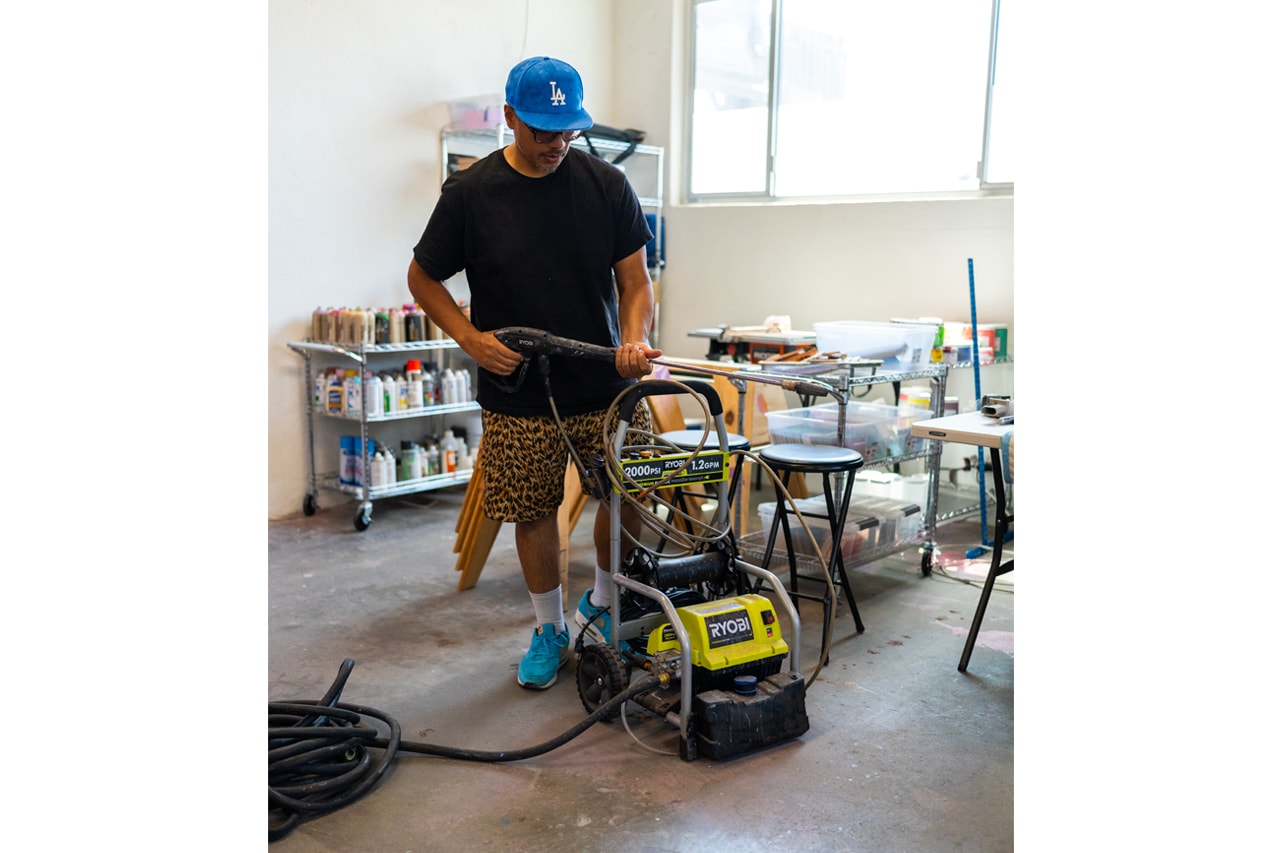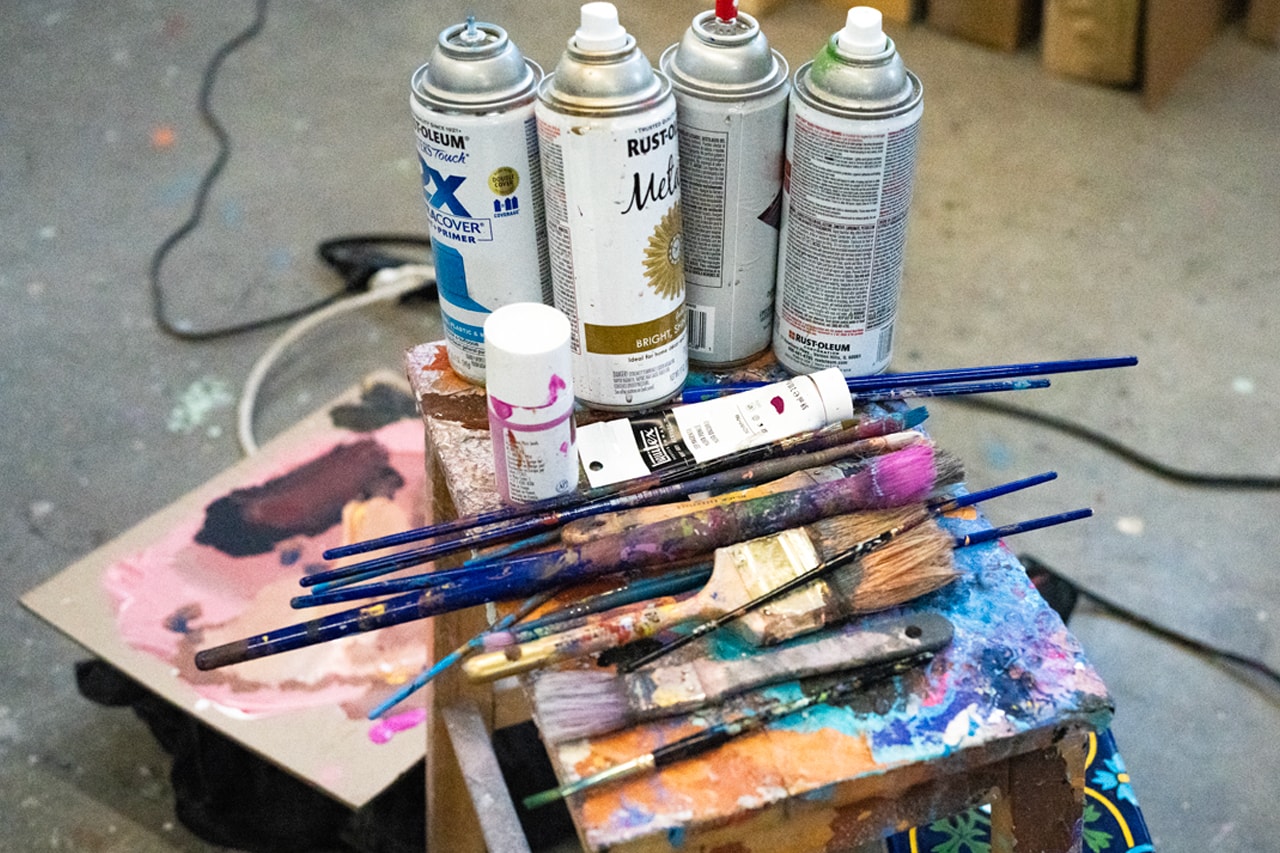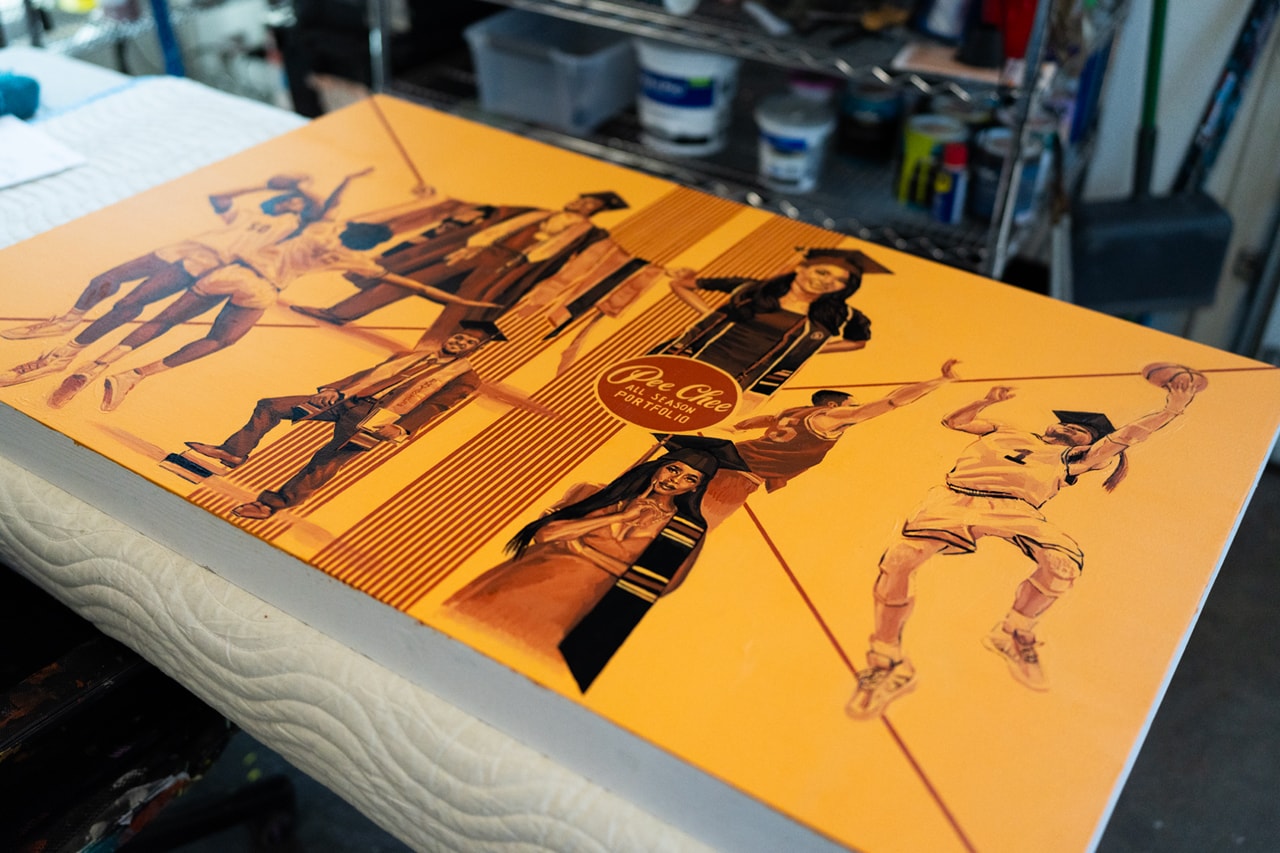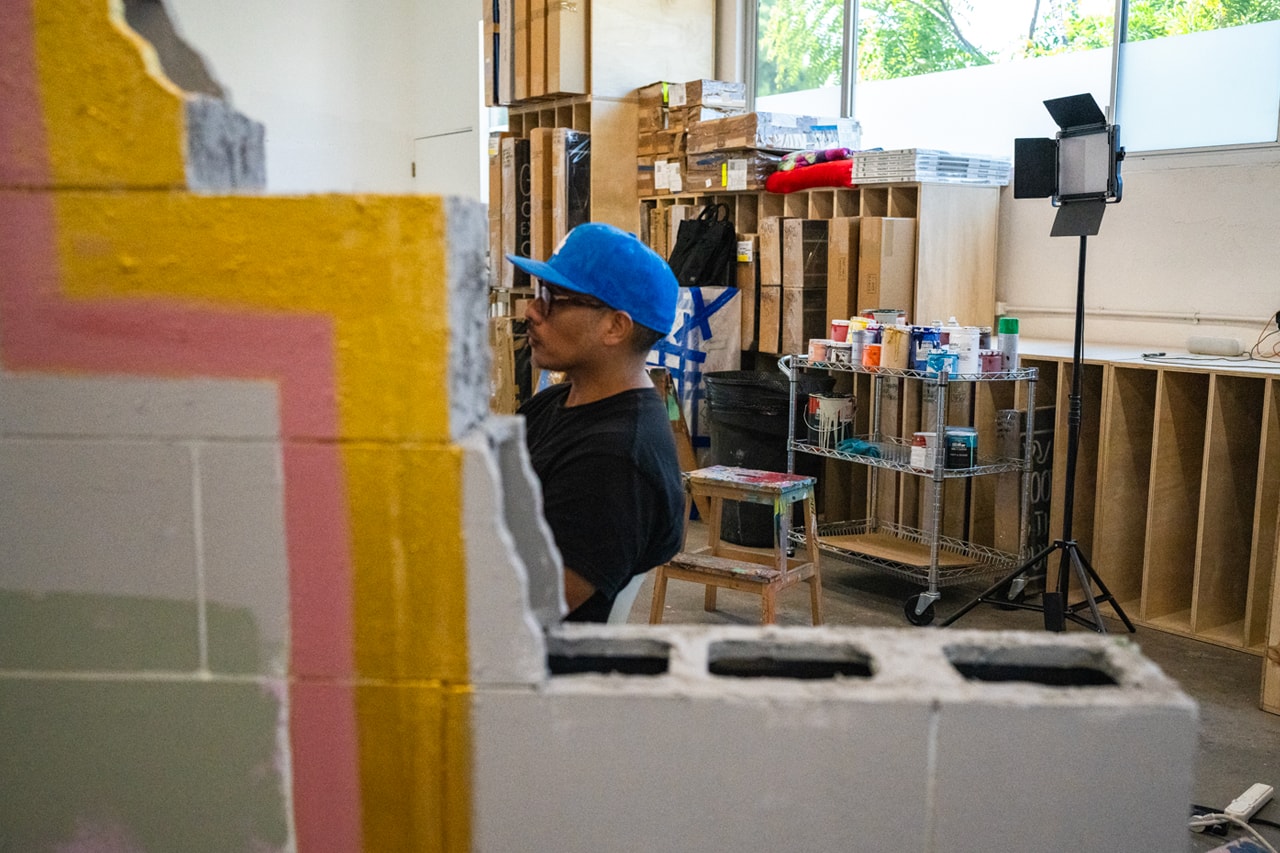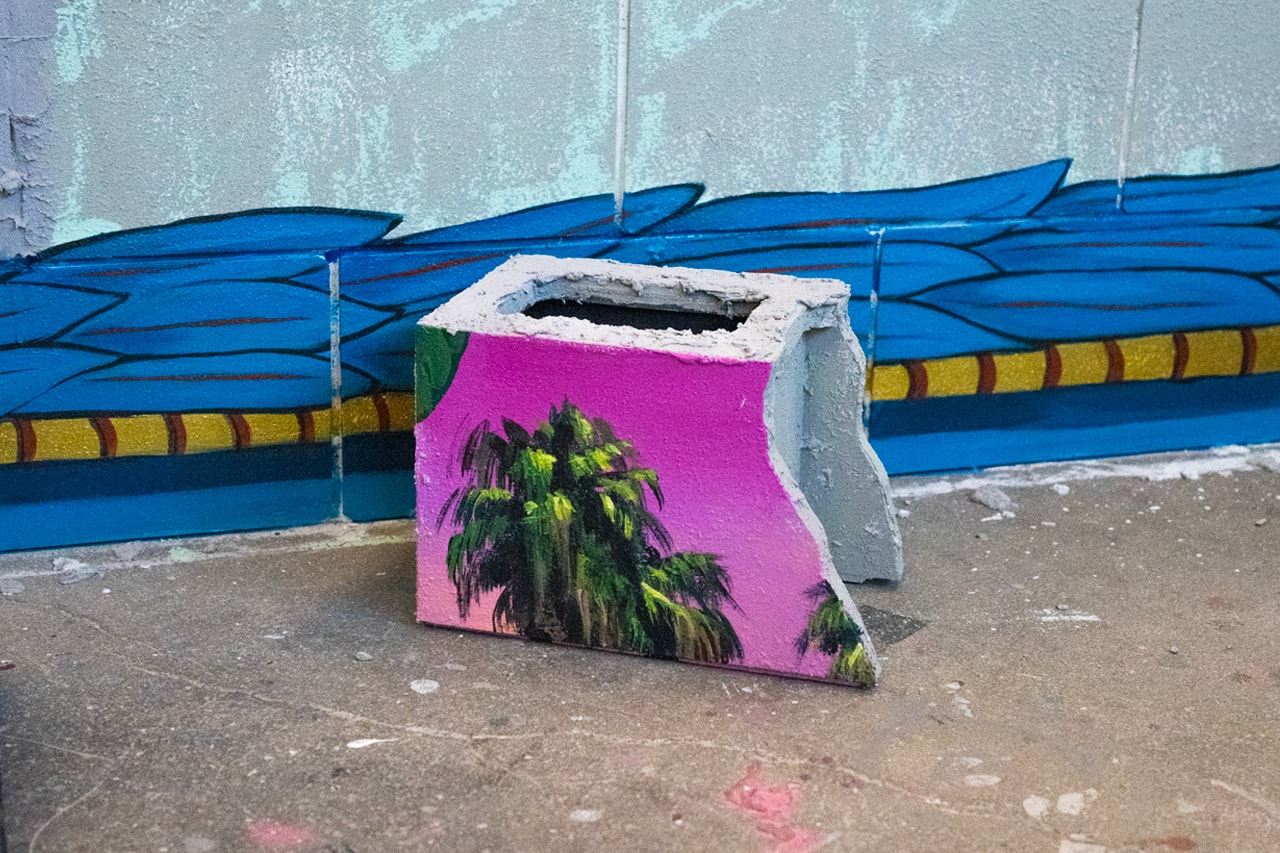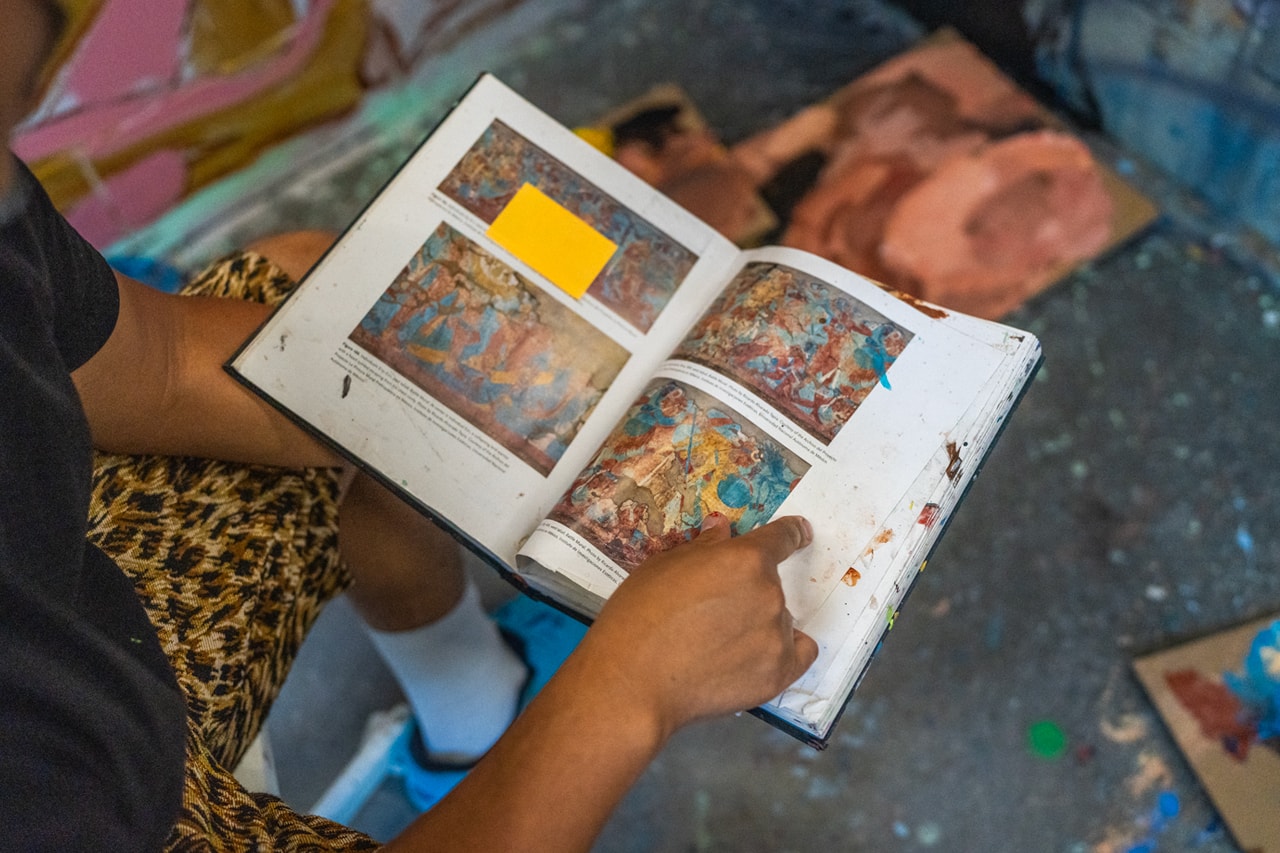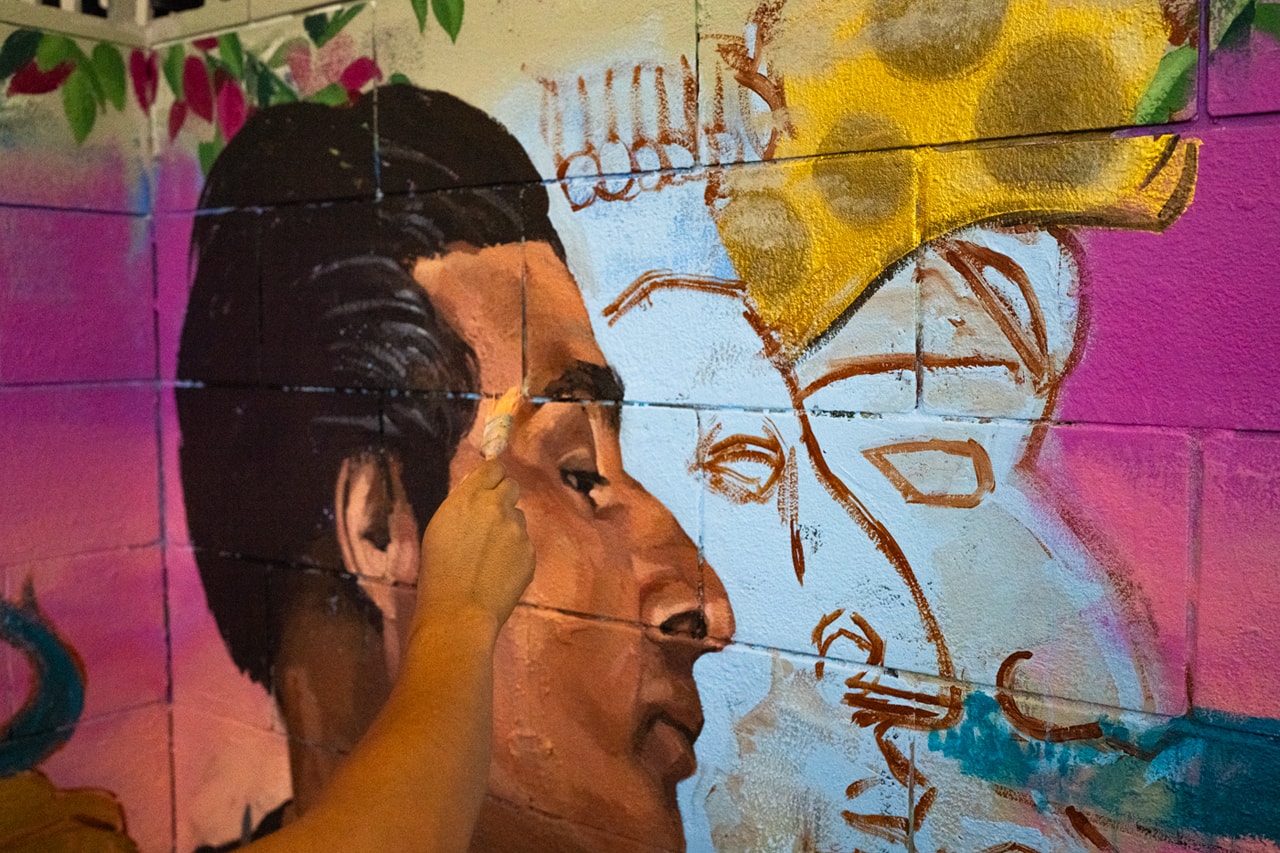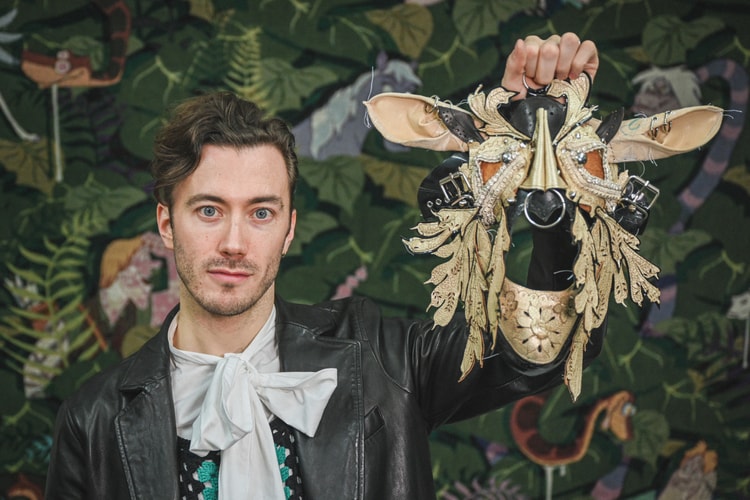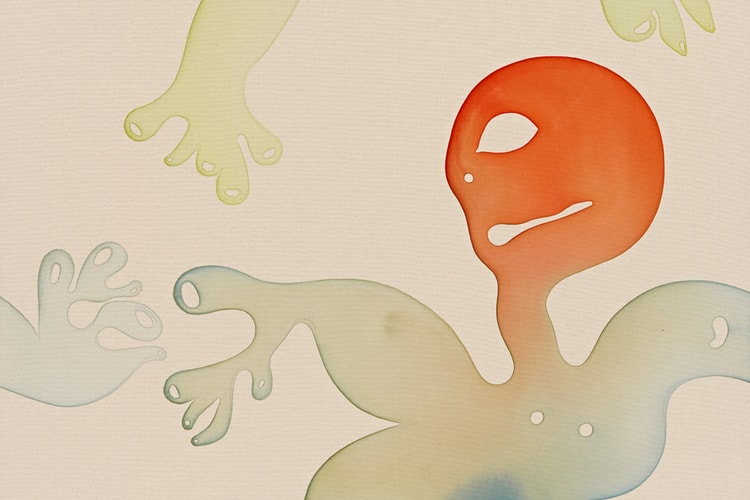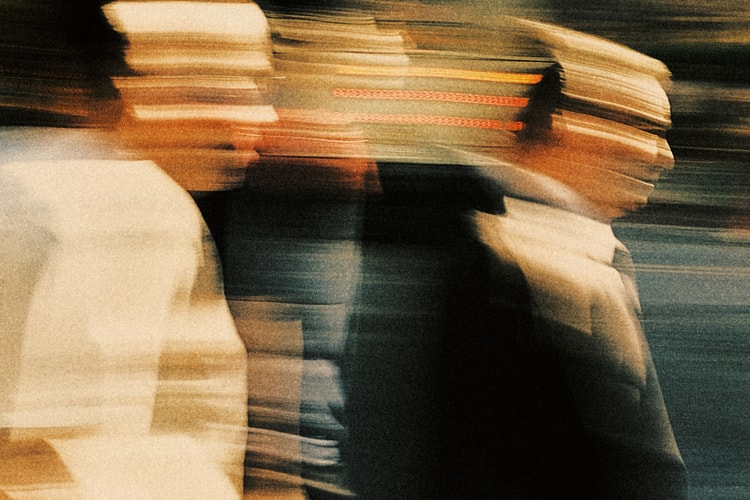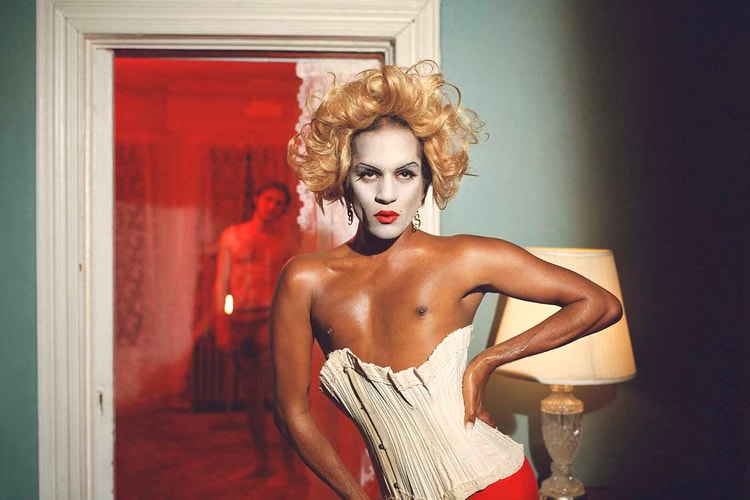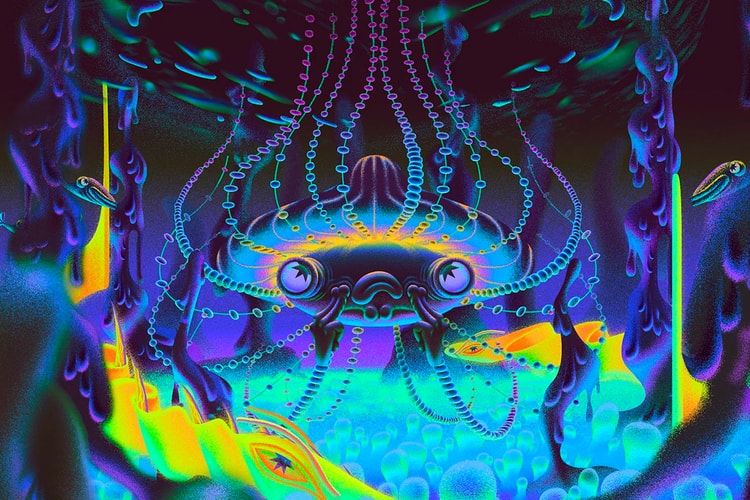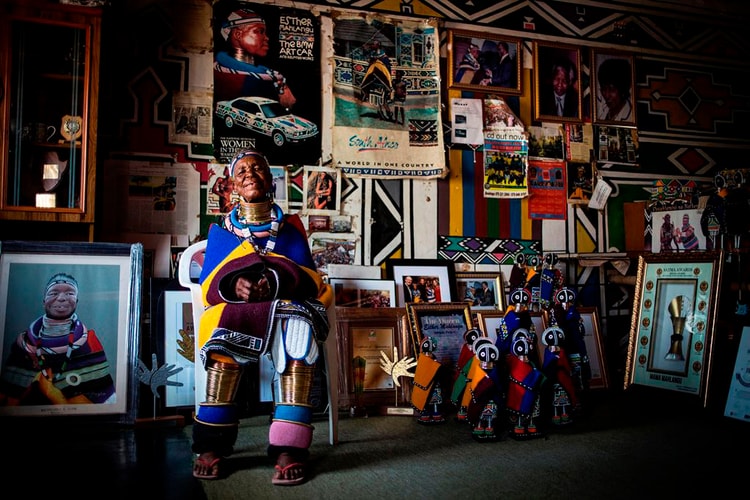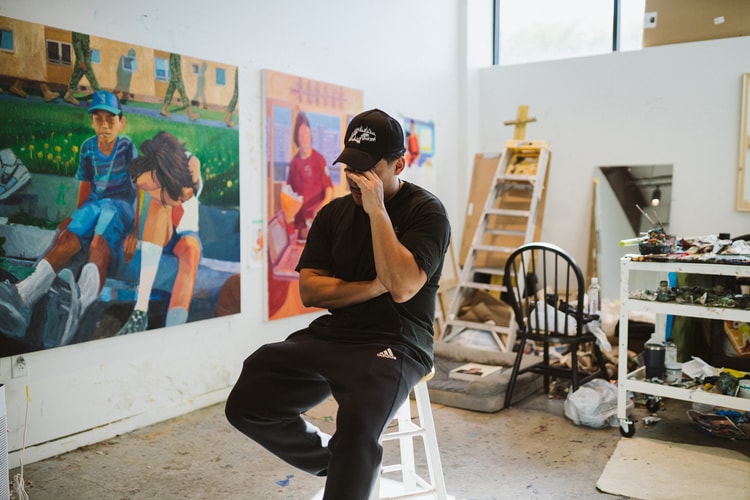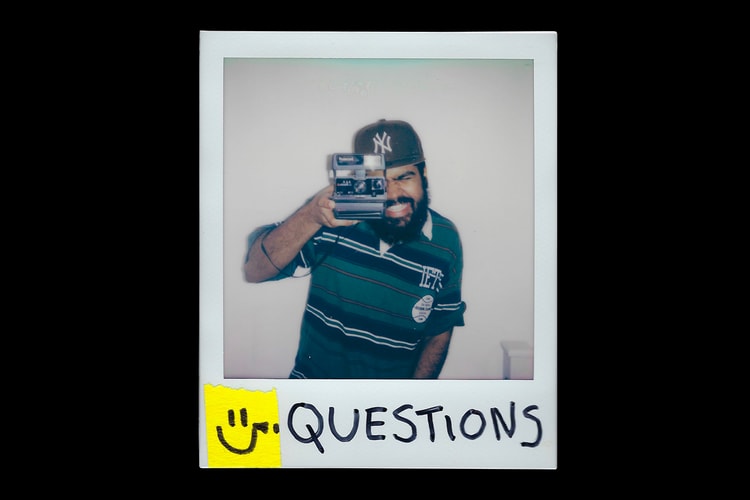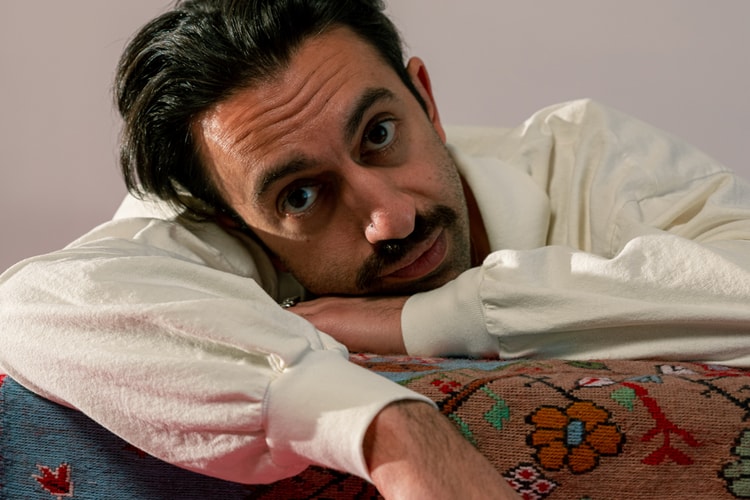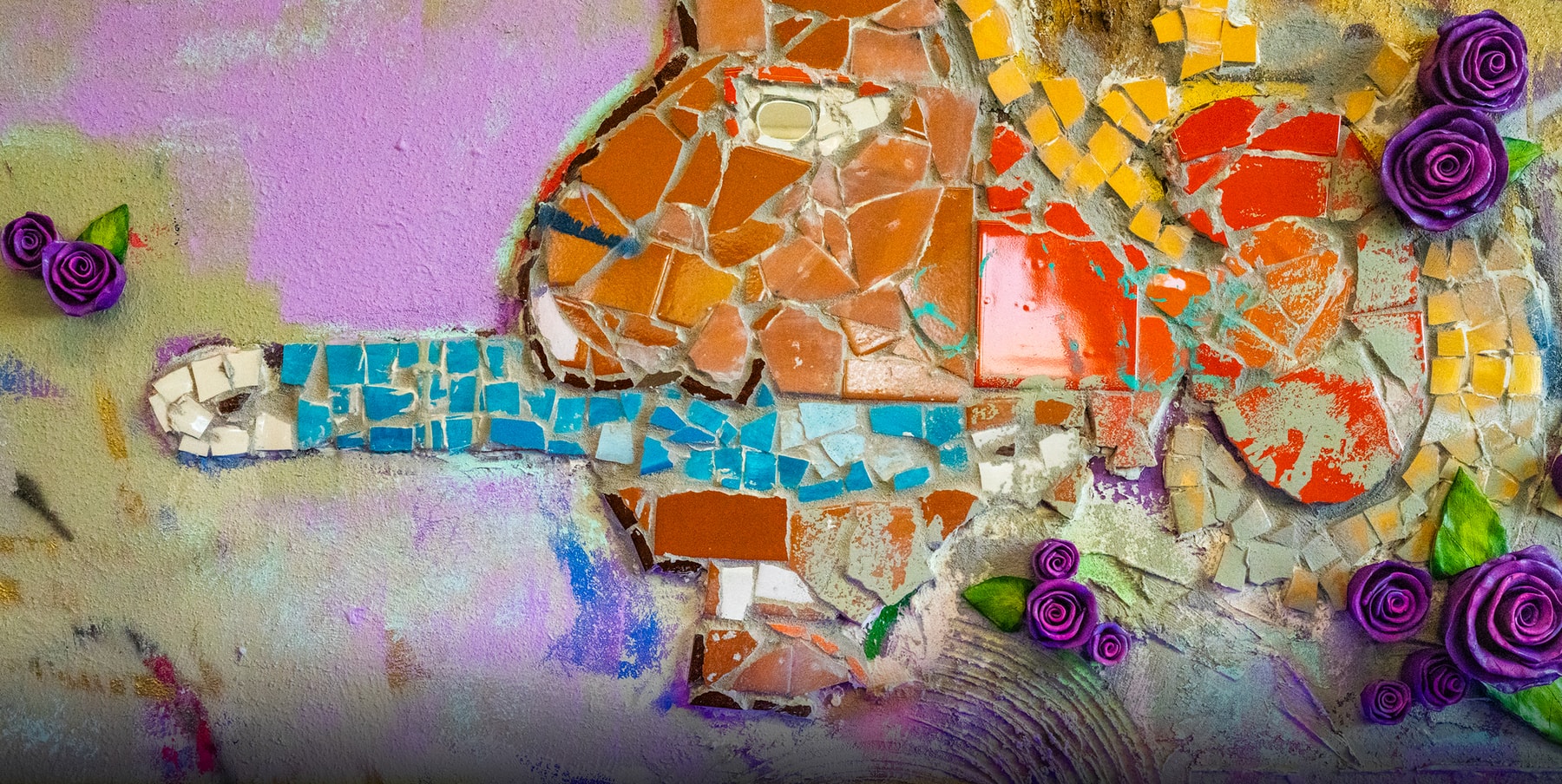

For Los Angeles-based artist Patrick Martinez, landscape paintings are more than just a way to depict a scene. They represent a form of preservation and a call for urgency. Part mural, sculpture and installation, Martinez has unconsciously redefined the traditional boundaries of landscape paintings through multi-media works that quite literally transport you to the physical place he has in mind.
Martinez, who was born to a Filipino mother and a Mexican and Native American father, grew up in the San Gabriel Valley and now resides in East LA’s Monterrey Park, where he uses his practice to comment on the erasure that is taking place all across his home city — especially on the peripheries to which he grew up.
The artist has been quietly perfecting his craft in the privacy of his studio over the years — subsequently bridging the gap for places not typically associated for cultural research, such as the storefront of an unassuming liquor store or the signage displaying the urgent needs of those who reside there. “It’s about the in-between,” he tells Hypebeast. “I want my work to look like it’s either being discovered or erased. It’s in the middle of that.”
Like Robert Rauschenberg before him, Martinez doesn’t limit himself to a pencil and paintbrush when deciding his tools of choice. Rather, the flicker of a neon sign, a decrepit cinder block in the neighborhood or security bars found on the side of a street hold the same artistic output when constructing his messages. “I want people to look when they see the work and see what they are missing currently, because that’s not always going to be here,” Martinez adds.
Just under 43 years of age, his work has featured in both solo and group exhibitions across the globe, including acquisitions by LACMA, Crocker Art Museum, Cornell Fine Art Museum and the Pizzuti Collection, amongst others.
“It’s important for me to talk to someone that doesn’t want to come into a museum or that doesn’t care to,” Martinez notes as he sits painting his latest sculptural installation. “The neons are kind of that, they hang in windows to try and communicate to a passerby.”
For the latest Hypeart Visits, we caught up with the LA-based artist to learn about the way in which he approaches material and how he uses his practice as a form of cultural preservation.
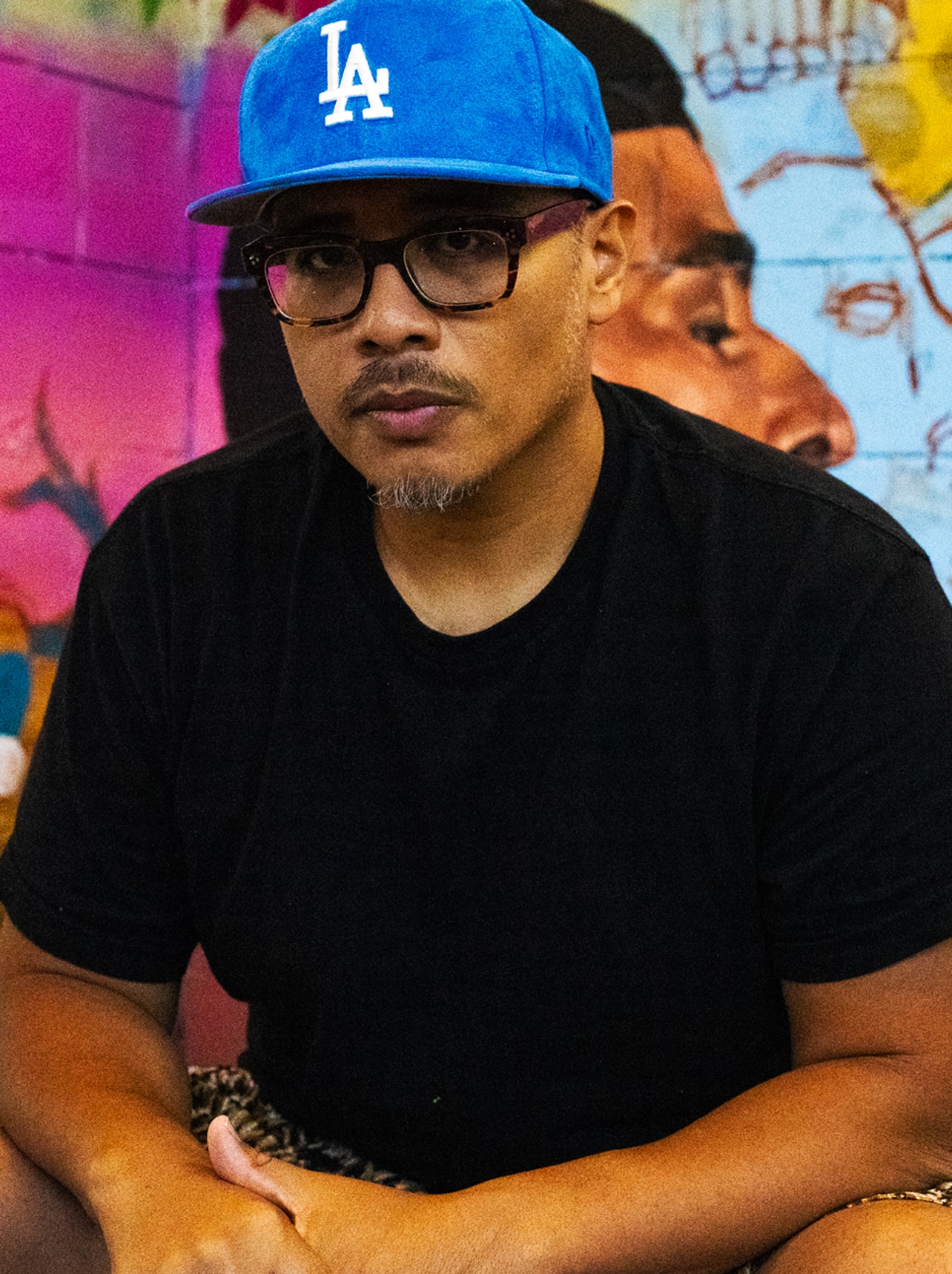
How did all this begin? Take us back to your early days and not just the art that inspired you, but everything else around you.
I turn 43 next month, so I think a lot more now about my formative years. At 42, I wonder what motivated me when I was 10 years old. I was always drawing since I was a child and would always be sketching on paper or a sketchbook. I was very organized in that way. I would just be drawing characters that I’d see on TV, because my brother and I watched a lot of cartoons like any other kid in the ‘80s. They were just something that we gravitated towards and I wanted to work for Hanna-Barbera and all these companies — like, ‘oh I can make my own characters.’
Then around 11 or 12 years old, I started to see how that would look like through spray paint, like all the graffiti guys, such as Lee Quiñones, and what they were doing in the ‘70s and ‘80s on the side of subway cars. I thought that was the freshest sh*t ever. My brother and I obviously stopped watching cartoons and started tagging. He was more into getting his name up, whereas, I was more into trying to manipulate the medium, like large-scale paintings. That was around ’92 and the Rodney King riots were happening in LA, rap music was the soundtrack and what was informing and motivating me to push forward.
It’s what guided me to graffiti and unconventional ways to make art. I was in a graffiti crew as a teenager and we also made our own artwork on canvas. When I went to college, I was painting more in the European tradition, so I went to Art Center College of Design shortly after and did three-and-a-half years, really setting the foundation of how to draw and paint. I was just experimenting a lot and still make mistakes.
“I want my work to look like it’s either being discovered or erased.”
Los Angeles is really a collection of many different villages. How would you describe LA, from the one you grew up in to the city it is today?
Back in the day, I felt like I was traversing the landscape because of graffiti. You can still see a snapshot of LA back in the ‘90s around town, but that is kind of the focal point in some of the aesthetic values in my work. I take things that feel overseen and discounted to make you look again. Not that everything is a time capsule and everything’s the same. There are places in San Gabriel Valley, Los Angeles, Alhambra that feel the same, but a lot of things are changing, and that’s kind of what the work does.
In LA, I feel like the landscape changes because of things like gentrification and more people coming here, so they have to build spaces to house them. The aesthetic that goes up the developments gives a whole different vibe. Also when I was growing up in the ‘80s, where there was a lot of street culture and gang activity, which translated into what people wore, the cars that they were driving and the politics you’d run into — even though you weren’t thinking like that. It was a whole mentality.
I don’t know if it’s a good thing or bad thing, but there’s so many different type of folks that come here, who operate in different ways. Some are from LA and have been here 10, 15 or 20 years and bring their own kind of sensibility to the city, which makes it new.
Erasure and preservation are two pillars to your practice. Can you explain further?
It’s about the in-between. I want my work to look like it’s either being discovered or erased. It’s in the middle of that. That’s the time that we’re speaking about now, and also, the aesthetics that I choose is specific to discounted areas, socio-economic spaces that feel like they’re being bulldozed and things built on top of. I’m taking those ruins and materials and creating sculptural paintings. I look at it like they’re already discarded in some ways. I think about Robert Rauschenberg, he was speaking about people not really understanding what is really present in their environment. They’re not really looking. So I want people to look when they see the work and see what they are missing currently, because that’s not always going to be here.
Your approach to materials is equally unique, from stucco and security bars to neon signage. Can you talk about how you source your material and the conceptual basis for this?
The neon work comes from storefront signage and stuff I was seeing back in 2008. There were a lot of mom and pop businesses that were closing and those signs communicated what they did — income tax checks, whatever. That mom and pop aesthetic, that community aesthetic, I gravitated towards, because this kind of messaging only deals with a real urgent kind of communication that has nothing to do with advertising. It was almost like the city speaking and that got me involved in checking out different storefronts and pulling from that aesthetic.
That was the precursor to investigating other materials on the surface of those businesses — stucco, security bars, LED signs. When those buildings actually sold, I was using the materials as a canvas. I was taking from landscape to create landscapes.
Your art redefines the traditions of landscape painting, by literally transporting an overlooked wall of a storefront to the white walls of a gallery. Can you talk about how this aesthetic developed and your motives behind it?
This vocabulary organically developed and it’s always changing, because the landscapes are always changing. There wasn’t really a place or gallery to show the work, I was just making it and wanted to be creating my own niche space.
For me, the inspiration wasn’t far, it wasn’t something I had to go drive to or feel. It was all around me and really just about the day-to-day excursions that you go on and serendipitously run into. When you pay attention to the land, it will provide. It’s giving you these visual cues, you just have to be open and pay attention.
Then I started to see it on white walls and thought it was such a contrast. It was speaking about a lot of different things, almost like the outside in, where this gallery is probably on a space that used to be a bakery.
“I always try to build bridges.”
How would you define your practice?
An investigation of the land. The land where I’m from and wanting people to understand: if you pay attention, there is a lot to see.
That’s what informs the work, me just being present. But it’s also about the process. I’m so married to the process, because you figure something new every time, which is what motivates me. This piece informs the next piece — it’s very organic.
What is your process like from earliest ideation to final execution?
The way it always starts is me seeing flashes of the piece. Not in high definition and it’s very clear, just more a temperature or hearing a song sonically, where you understand what’s different about this piece that I really want to play up.
Sometimes I see flashes or I run into a place in the city, which sparks a piece of color of the wall or how the hangers are hanging. I take a lot of photos and while sometimes I pre-sketch, I usually just go for it. Like in this piece, there’s going to be a security window and inside there will be vinyl stickers peeling away a lot of light, which will be the focal point of the artwork. Sometimes you get a piece that looks like the flash you saw, or other times it’s entirely different.
Long ago, artist were just laborers like any other profession, such as a blacksmith. Do you believe there is an inherent ‘duty’ for the artist today, such as serving the public or is art always the expression of the individual?
For me, I don’t think there is anything wrong about working for your own self expression. That can be fulfilling and feed your should — that inner poverty that the city or just this country gives and brings — because there’s so many immoral situations.
Visual language was always the way I communicated, so sharing was an easy way of doing that, which is why I started doing graffiti. It can go both ways and it will change for a lot of artists. Art gives you that room to evolve. I’m a very private person, where I like to work alone but afterwards, I turn it loose into the world where it can be shown. Not that I’m thinking of people all the time when I create, but I think about people in a sense because I have to — it’s where I’m coming from — the stories, the places they lived, the stores they own.
I always try to build bridges. Taking the work and having it come out into the community is something I strive for. It’s important for me to talk to someone that doesn’t want to come into a museum or that doesn’t care to. The neons are kind of that, they hang in windows to try and communicate to a passerby. I try to speak to everyone, because it’s just the way I speak visually, but it doesn’t necessarily motivate me, like ‘oh, everyone is going to see this.’
For the neon signage, are you constantly writing in a journal?
Yeah it’s kind of like warning signs or things people need to hear right now. Poets who are long gone, but their work can still be heard today and be profound. It’s a portrait of me giving that quote a breath of fresh air. People will see and ask themselves: ‘Who was Frederick Douglass?’ Which will make them revisit that person.
It’s a lot of respect to the things that I’m reading or even a quote that feels good, something I make up or hear. It can be Malcom X conflated with palm reading signage. What would that look like? How can I bring that message from the past to the present?
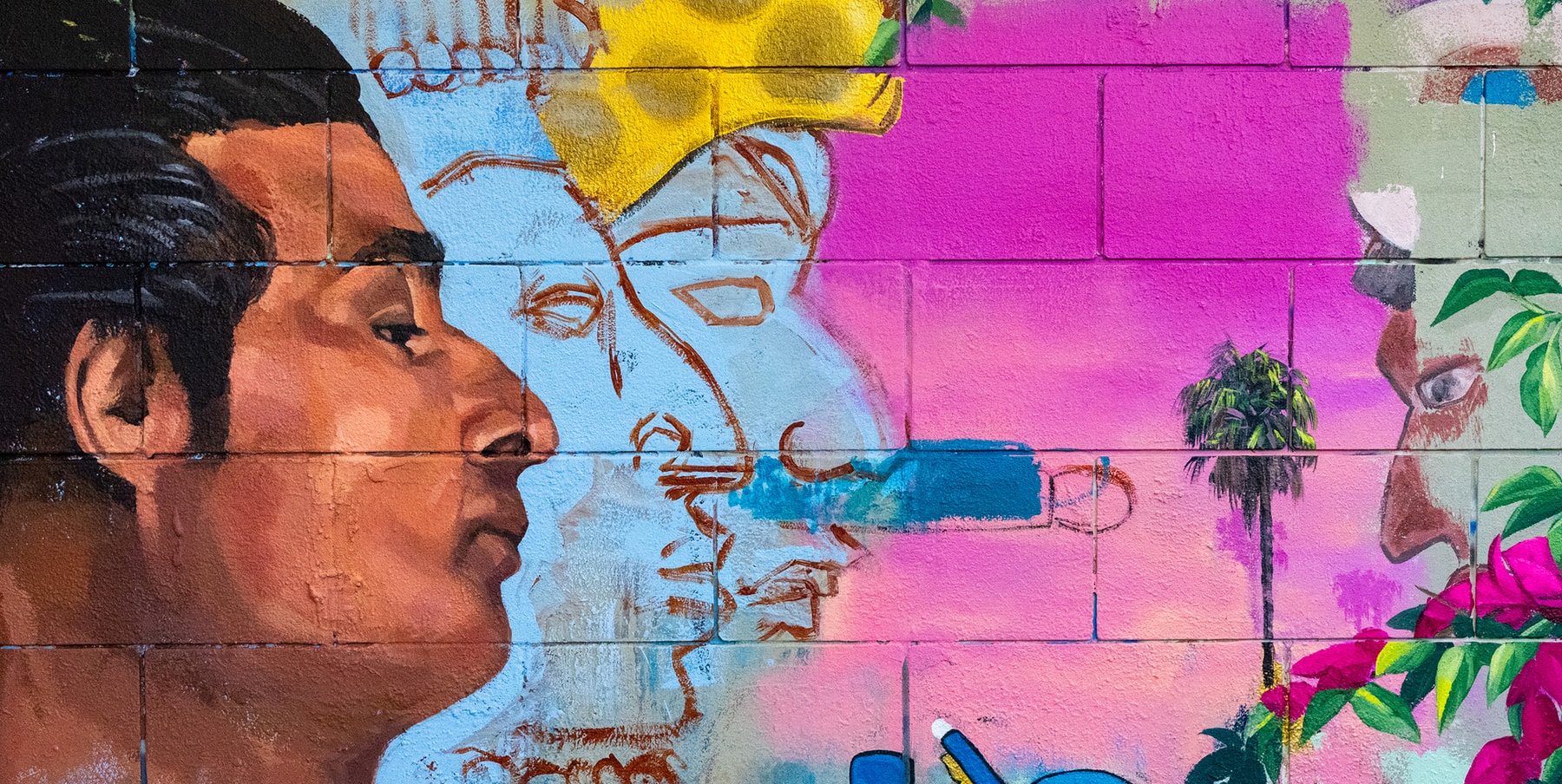
“It feels like I’m excavating the recent past.”
Can you talk about the current two works you’ve been tinkering with in the studio?
I wanted to make a 3D sculptural piece, what I would call wall works. What would a three-dimensional piece that people could walk around look like? These cinder blocks are just around my house and are creating walls. It’s talking about breaking down the spaces and places that used to exist and aren’t here anymore. What does that breaking down look like? How would those murals that are painted over look like? Who are these people in the murals? That’s what I’m thinking about.
This is pretty much all wood panel and it’s all kind of new to me, but ideas I want to play with. How can I use these materials that we see everyday and make it interesting, like sculpture? Since that reference material is Central Mexican mural painting — those are ruins. And thinking of art as artifact, what do our rooms look like today? It feels like I’m excavating the recent past. There’s no real formula to it.
The other neon piece is informed by Central Mexican murals and archaeological sites. I’m really interested in that kind of space, because the style of painting and the art from that is a hybrid. The Mayan civilization is not supposed to be found in Mexico. I feel like that migration and hybridity is something that comes up a lot in my work, because my mother was Filipino and my dad is Native American and Mexican. Thinking about all those things and combining is why I was drawn to those sites.
I imagine those characters are migrating to LA on different wall surfaces. First, they were paintings, then they transition into mosaics. So maybe these figures found their homes off the sides of liquor stores and they want to fight the weather, the gentrification and they fused into the wall.
How about newer works, exhibitions or series you’d like to highlight?
There’s an installation of neons at the Whitney if you’re in the New York area. It’s right at the entrance, which I enjoy, because the neon signs come from windows and storefront signage. Also, I’m making this current installation for a show at the Institute of Contemporary Art San Francisco (ICA SF). It’s going to be one of my biggest museum shows, which will open on September 23. That show will consist of a lot of landscapes and some neons.
All photos by Shawn Ghassemitari for Hypeart.




